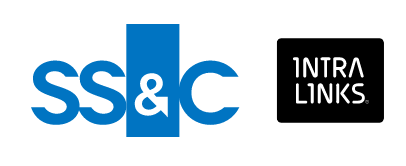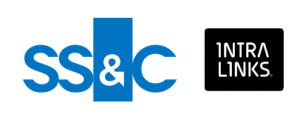“Sometimes a company’s best deals are the ones they did not do,” said Chuck Watson, chairman and chief executive of Dynegy. The former energy company specialized in the generation and trading of electricity. In 2001, Dynegy was on the brink of a $9 billion merger with Enron, a major energy-trading firm, but the deal collapsed after concerns about Enron’s financial health, which was exposed during due diligence.
This is a great example of how identifying red flags early in negotiations helps companies avoid costly mistakes and protect their long-term interests.
The article explores how red flag due diligence serves as a crucial step in uncovering hidden risks and potential deal breakers, preventing companies from entering into agreements that could have disastrous consequences.

What is red flag due diligence?
Red flag due diligence is a review process used to quickly identify major risks or problems that could jeopardize a transaction, such as an acquisition or investment. Unlike comprehensive due diligence, which examines all aspects of a target company, red flag due diligence prioritizes uncovering major concerns quickly and efficiently.
Key areas of focus include financial stability, legal compliance, operational risks, and reputational issues. For example, undisclosed liabilities, pending lawsuits, regulatory violations, or misrepresented financial performance are potential red flags that could pose significant risks to the deal’s success.
This approach helps decision-makers assess whether to proceed with the transaction, renegotiate terms, or abandon the deal altogether.
The case of SoftBank and WeWork highlights the critical role of red flag due diligence. In 2020, SoftBank transferred nearly $1.5 billion to WeWork’s lenders just days before the company filed for bankruptcy. Had SoftBank conducted more thorough due diligence, it could have identified WeWork’s unsustainable business model, excessive spending on long-term real estate leases, and significant governance issues much earlier.
Related articles: If you’re evaluating a startup, explore our guide on how to do due diligence on a startup. For those buying a company, here are some helpful due diligence questions to ask when buying a business.
Common red flags in the due diligence process
Pay close attention to the following red flags in due diligence for an M&A:
- Financial instability. Unclear or inconsistent financial statements, high debt levels, or poor cash flow management.
- Legal issues. Ongoing or potential lawsuits, regulatory violations, or intellectual property disputes.
- Unreported liabilities. Undisclosed debts or obligations that could affect the company’s value or future operations.
- Management problems. Weak leadership, high employee turnover, or issues with the company’s governance structure.
- Overvaluation. Unrealistic or inflated financial projections, especially if they don’t align with market conditions.
- Compliance and regulatory risks. Non-compliance with industry standards or government regulations could result in fines or legal action.
- Operational inefficiencies. Poor internal processes, outdated technology, or inefficient operations hinder growth. For a deeper understanding, explore an operational due diligence framework to effectively assess and address such issues.
- Customer dependency. Relying too heavily on a small group of customers or clients creates a risk if they leave.
- Reputation damage. Negative media coverage, customer complaints, or a damaged brand affects future sales or partnerships.
- Misleading financial performance. Misrepresentation of revenue, expenses, or other key financial data that doesn’t match the company’s actual performance.
Each due diligence red flag requires deeper investigation to ensure the deal remains viable and aligns with your goals.
| 🔎 Explore the essential due diligence process steps to ensure a thorough evaluation and informed decision-making in any transaction. |
Due diligence red flags report template
A due diligence red flag report is a structured document used during due diligence to summarize critical risks identified in a transaction. It highlights areas of concern, evaluates potential impact, and suggests actions to address.
Here’s what to include in a red flag report due diligence to ensure all critical risks are documented and addressed:
- Executive summary. A concise overview of the findings, summarizing the key red flags and warning signs and their implications.
- Risk categories. Group red flags into financial, legal, operational, compliance, and reputational risks.
- Description of each red flag. Detailed explanation of the issue, including its nature, scope, and underlying causes.
- Risk assessment. Evaluation of potential impact (low, medium, high) and likelihood of each red flag.
- Evidence or supporting data. Documentation, like income statements, balance sheets, or other evidence supporting the identified red flags.
- Recommended actions. Suggested steps to mitigate or address the risks, such as renegotiating terms or seeking further clarification.
- Timeline for resolution. Proposed deadlines or timeframes for resolving each issue.
- Stakeholders or responsible parties. Identify who is responsible for addressing the flagged issues.
Use a red flag report template like the one below, designed to help structure and present critical risks identified during the due diligence process.
Red flag report template
[Your company name/logo]
Date: [insert date]
Prepared by: [your name/team]
- Executive summary
Overview: Brief summary of the transaction and key findings.
Primary red flags identified: [List the most critical issues with a short description.]
- Risk categories and findings
| Risk category | Red flag | Impact level | Evidence |
| Financial risks | High debt-to-equity ratio | Low/Medium/High | Financial reports or data references |
| Compliance and legal risks | Pending lawsuits | Low/Medium/High | Details of lawsuits or compliance gaps |
| Operational risks | Outdated technology | Low/Medium/High | Operational assessments or system evaluations |
| Reputational risks | Negative media coverage | Low/Medium/High | Media reports or stakeholder feedback |
- Supporting evidence and data
[Attach relevant financial records, legal documents, operational reviews, or other materials supporting the identified red flags.]
- Conclusion and next steps
| Red flag | Recommended action | Timeline for resolution | Responsible parties |
| High debt-to-equity ratio | Request debt restructuring | [Timeframe] | [Responsible party/team] |
| Pending lawsuits | Conduct a legal review | [Timeframe] | [Responsible party/team] |
| Outdated technology | Invest in system upgrades | [Timeframe] | [Responsible party/team] |
| Negative media coverage | Implement PR strategies | [Timeframe] | [Responsible party/team] |
Tools and techniques for identifying red flags
Many companies struggle to identify potential deal breakers specific to their business. The following methods can be used as a starting point:
- Background checks. This examines the history of individuals and companies involved, revealing hidden risks like past legal disputes or questionable business practices.
- Financial audits and forensic analysis. Financial audits verify the accuracy of financial statements, while forensic analysis uncovers potential fraud or misrepresentation in the company’s financial records.
- Regulatory and legal compliance checks. This ensures that the firm adheres to relevant laws and regulations, identifying risks related to non-compliance that could lead to hefty fines or legal actions.
- Contract and intellectual property assessments. Reviewing contracts and intellectual property (IP) assets helps uncover hidden liabilities, such as unfavorable agreements or potential intellectual property disputes.
- Employee and stakeholder interviews. Direct conversations with employees and stakeholders provide insight into internal issues, such as company culture problems or employee dissatisfaction, which may not be visible in documents.
- Cybersecurity audits. These audits assess the company’s data protection and identify risks related to potential cybersecurity breaches or vulnerabilities in the company’s IT infrastructure.
- Market and industry research. Conducting research into market trends and industry conditions reveals external risks that may affect the company’s growth, such as changes in consumer behavior or emerging competition.
Enhancing red flag due diligence with virtual data rooms
Ideals

- Access controls
- Built-in viewer
- Full-text search
- Auto-indexing
- Customizable branding
- Advanced Q&A
- In-app live chat support 24/7
- 30-second chat response time
Dealroom

- Access controls
- Built-in viewer
- Full-text search
- Auto-indexing
- Customizable branding
- Advanced Q&A
- In-app live chat support 24/7
- 30-second chat response time
Citrix

- Access controls
- Built-in viewer
- Full-text search
- Auto-indexing
- Customizable branding
- Advanced Q&A
- In-app live chat support 24/7
- 30-second chat response time
Box

- Access controls
- Built-in viewer
- Full-text search
- Auto-indexing
- Customizable branding
- Advanced Q&A
- In-app live chat support 24/7
- 30-second chat response time
Intralinks

- Access controls
- Built-in viewer
- Full-text search
- Auto-indexing
- Customizable branding
- Advanced Q&A
- In-app live chat support 24/7
- 30-second chat response time
Virtual data rooms (VDRs) greatly improve the red flag due diligence process by securely organizing and sharing important documents. They streamline the identification of potential risks, helping teams work more efficiently and effectively.
Here are the key benefits of a virtual data room due diligence:
- Centralized document storage. Virtual data rooms allow all critical documents to be stored in one location, making it easier for due diligence teams to access and review files such as financial statements, contracts, and corporate compliance records.
- Advanced search features. Data rooms offer robust search tools, enabling users to find specific information quickly, identify inconsistencies, or spot red flags such as hidden liabilities or regulatory issues.
- Real-time collaboration. Stakeholders can work together in real-time, allowing for quicker decision-making and more efficient discussions about potential risks.
- Enhanced security. Virtual data rooms provide secure access controls, ensuring that only authorized users can view sensitive documents, reducing the risk of data breaches or unauthorized disclosures.
Implementing a robust red flag due diligence process ensures better transaction outcomes and long-term stability.
Key takeaways
- Red flag due diligence is essential for identifying major risks early, allowing companies to make informed decisions and avoid costly mistakes.
- It helps uncover hidden issues like financial instability, legal challenges, and reputational damage that could derail a transaction.
- A structured red flag report is crucial for documenting risks, assessing their impact, and recommending actions to mitigate them.
- Virtual data rooms enhance the due diligence process by streamlining document review, improving collaboration, and ensuring secure handling of sensitive information.

